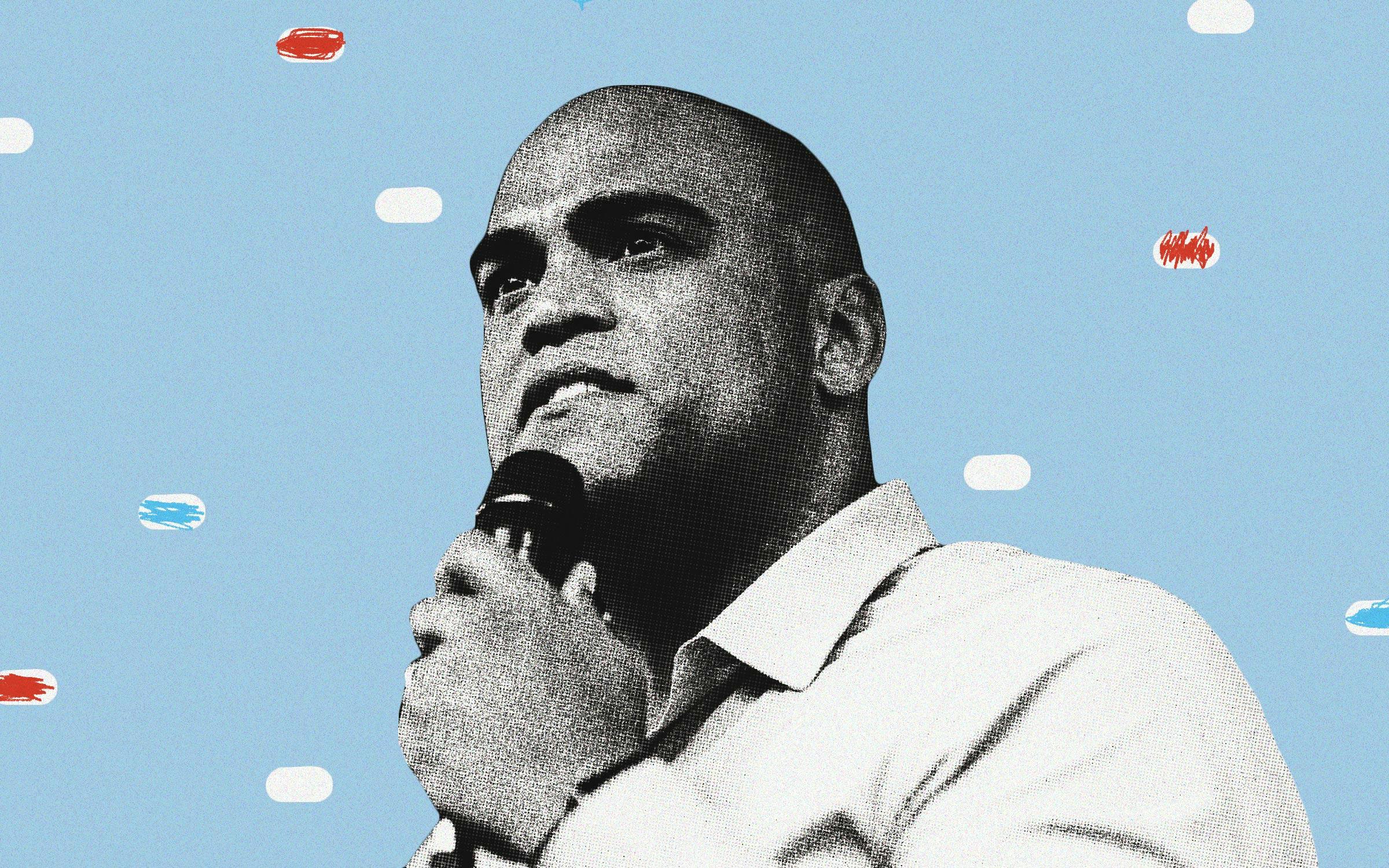When he was campaigning against Ted Cruz in 2018, Beto O’Rourke barnstormed across Texas in his Toyota Tundra, visiting all 254 counties and inspiring near-messianic fervor among Democrats. Spurning the advice of national political consultants, the El Paso congressman relied on small-dollar donations to power a proudly independent campaign. He maintained an unapologetically progressive platform while striking an upbeat, centrist tone, at one point embarking on a road trip with Republican Congressman Will Hurd. On Election Day, O’Rourke fell less than three points shy of beating Cruz—the closest any Democrat had come to winning a statewide race in two decades. A star was born.
Six years later, Cruz had supported an attempted insurrection and fled to Cancún while his constituents shivered in the dark. He looked newly vulnerable. This time Texas Democrats nominated Colin Allred, a genial Dallas congressman and former NFL linebacker, over state Senator Roland Gutierrez, a fierce partisan who made his name calling out Cruz after the Uvalde massacre. Allred, the thinking went, had a better chance of winning over swing voters—the kind of folks who liked Donald Trump but didn’t care for Cruz.
The result: Allred lost to Cruz by nearly nine points. A star was stillborn. “We didn’t have strong base turnout,” said Matt Angle, director of the Lone Star Project, a Democratic PAC. “The vote fell short in the big urban counties. In Harris County you had lower performance among Hispanic and white voters than 2020.”
In the wake of Allred’s defeat, Democratic strategists will surely second-guess the candidate’s strategy. Not really known outside his district at the outset of his Senate campaign, he failed to define himself as anything other than the anti–Ted Cruz, allowing Republicans to fill in the blanks with an expensive barrage of often misleading TV ads. Allred’s tepid responses—“I don’t want boys playing girls’ sports or any of this ridiculous stuff Ted Cruz is saying,” he protested in one—irritated Democrats while failing to mollify conservatives.
Allred mounted a campaign that was almost the polar opposite of O’Rourke’s. Compared with most statewide candidates, and especially with O’Rourke, he campaigned with curious infrequency and kept a low profile, preferring intimate roundtables to megawatt rallies. He presented himself as a moderate, distancing himself from the Biden administration and adopting a hawkish position on the border, yet still got attacked as “too liberal for Texas.” Rather than cultivating the grassroots, he relied on funding from out-of-state donors and the Democratic Senatorial Campaign Committee. At one point, O’Rourke felt compelled to recommend “more unscripted moments, more connecting with people.” Maybe Allred should have taken his advice.
Although Allred outperformed Kamala Harris in Texas by five points, he failed to match O’Rourke’s 2018 performance. “Beto worked from the bottom up, and Allred worked from the top down,” said University of Houston political scientist Brandon Rottinghaus. “Both had their flaws, but mobilizing the grassroots and having a strong ground game was a big factor in Democrats doing better that year.” Exit polling suggests that Allred lost to Cruz among whites (winning just 37 percent of the vote), Asian Americans (39 percent), and Hispanic voters (46 percent, compared with 64 percent for O’Rourke in 2018). Allred’s four-point edge among women wasn’t enough to offset Cruz’s nineteen-point advantage with men. And just 14 percent of voters said that abortion access—Allred’s signature issue—was their top priority.
In a dismal election year for Democrats at every level, it’s unclear whether another candidate would have performed any better. In 2018 O’Rourke benefited from a national backlash against President Trump. This year, with the Biden-Harris administration regarded as weak on immigration and inflation, Republicans were on the offensive across the country. “This was a clear disaster for Democrats,” Rottinghaus said. “It looks more like 2000 than 2020. The Democrats didn’t make significant gains anywhere. The urban vote they hoped would materialize didn’t materialize. The suburban vote wasn’t there.”
No Democrat has won a statewide election here since 1994, and Republicans have controlled the Governor’s Mansion and both legislative chambers since 2003. In recent years, the Democratic Party’s occasional hard-won gains have been offset by crushing setbacks. As urban and suburban Texas became increasingly blue, rural Texas became increasingly red. As Dems won ground along the Interstate 35 corridor, they lost ground among traditionally blue Hispanic voters in South Texas. As they picked up support from college graduates, they lost it among those whose formal education ended in high school, and especially among men in that group. Unappealing candidates and messaging, along with increasingly sophisticated gerrymandering, wiped out any hope of flipping the Texas Legislature. Trump’s strength with Hispanic voters has punctured the comforting fiction, promoted by state Democratic leaders, that demographic change alone will drive the state leftward.
“What are the roots that clutch, what branches grow out of this stony rubbish?” asked T. S. Eliot a hundred years ago. Texas Democrats are now wondering much the same thing. For them, the cruelest month always seems to be November.

